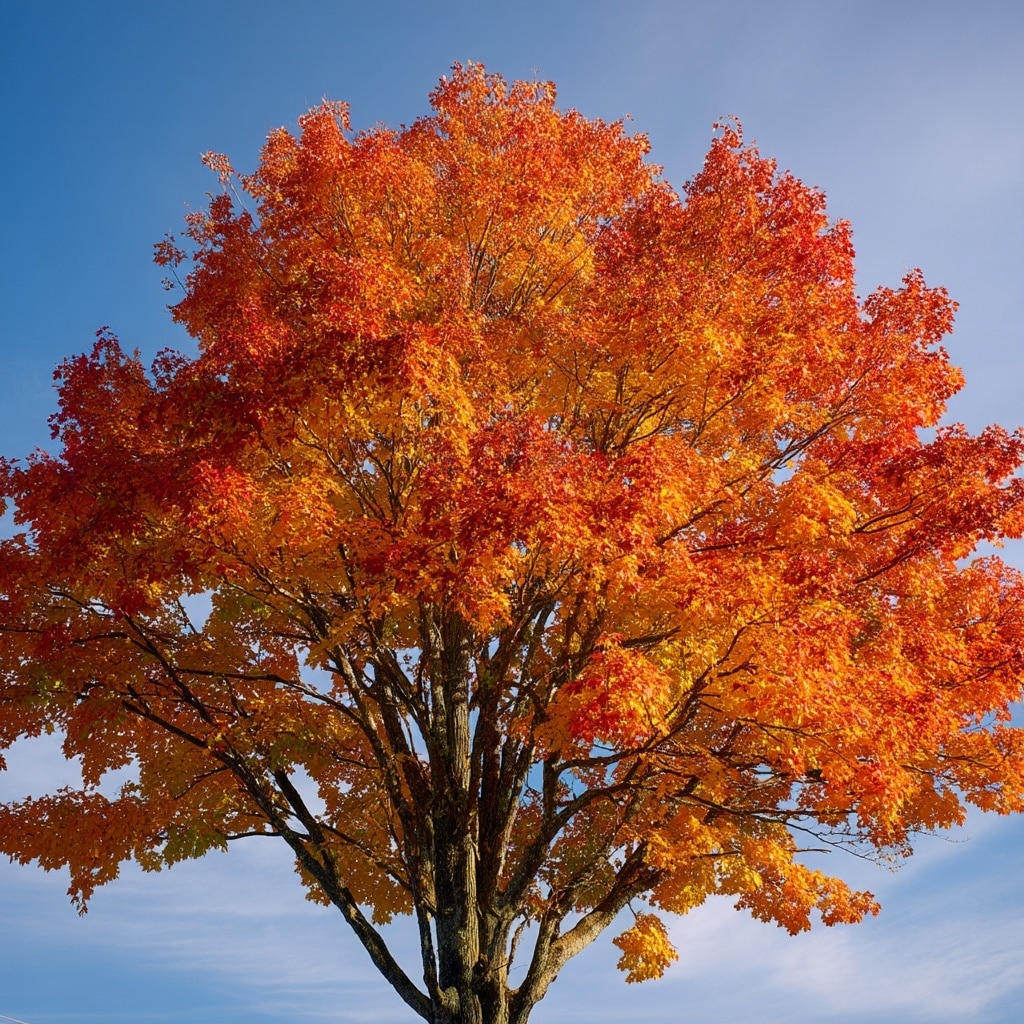When it comes to transforming your yard into a show-stopping seasonal display, nothing rivals the beauty of a fall tree in full color. From fiery reds to glowing golds, the right trees can create an autumn landscape that feels almost magical. Whether you’re working with a spacious backyard or a compact garden, planting a fall tree not only adds color and texture but also supports local wildlife and enhances curb appeal.
In this guide, we’ll walk through 12 of the best trees and large shrubs that shine brightest during the autumn months. Each selection offers unique benefits—from brilliant foliage to interesting bark or multi-season interest—making them ideal choices for any garden lover looking to elevate their autumn scenery. Whether you’re a seasoned gardener or just planning your first planting, these fall trees will ensure your yard puts on its own spectacular fall show.
Table of Contents
1. Sugar Maple (Acer saccharum)
If you’re searching for the ultimate fall tree, the Sugar Maple is a timeless choice. Renowned for its vibrant, multicolored foliage, this classic tree puts on a dazzling display of red, orange, and yellow—sometimes all on the same leaf. Its large, rounded canopy makes it a standout in both urban and rural landscapes.
- USDA Zones: 3–8
- Mature Size: 55–75 ft tall, 30–50 ft wide
- Best For: Shade, large yards, iconic fall color
Keep in mind that Sugar Maples need space to thrive. Give it a central spot in your yard to let its autumn brilliance shine.
2. Serviceberry (Amelanchier spp.)
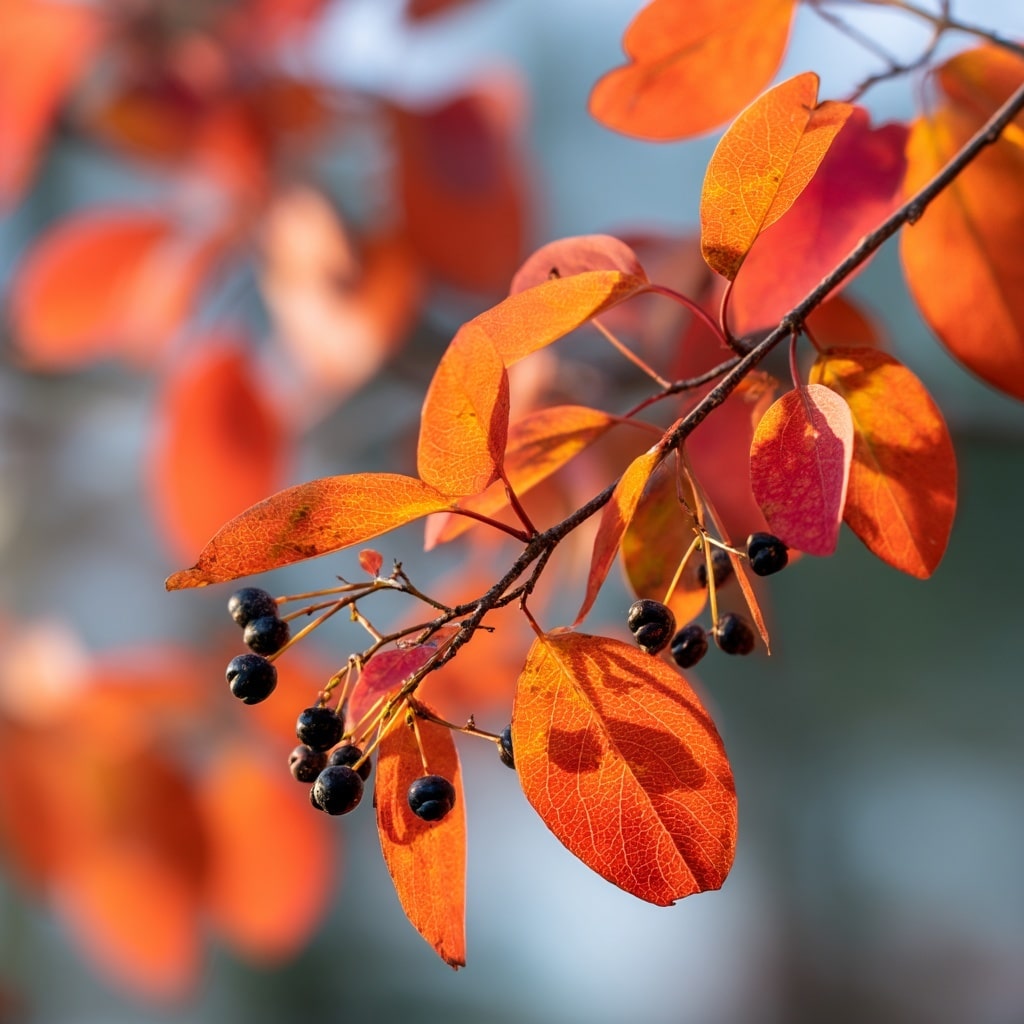
Don’t let its delicate appearance fool you—Serviceberry is a powerhouse of seasonal beauty. While it’s known for its white spring blooms and edible summer berries, this small fall tree delivers rich orange-red foliage come autumn. It’s especially suited for small gardens or as an ornamental specimen.
- USDA Zones: 4–9
- Mature Size: 15–25 ft tall and wide
- Best For: Four-season interest, compact spaces
Try the cultivar ‘Autumn Brilliance’, which is favored for its intense fall color and adaptability as either a tall shrub or single-trunk tree.
3. Red Maple (Acer rubrum)
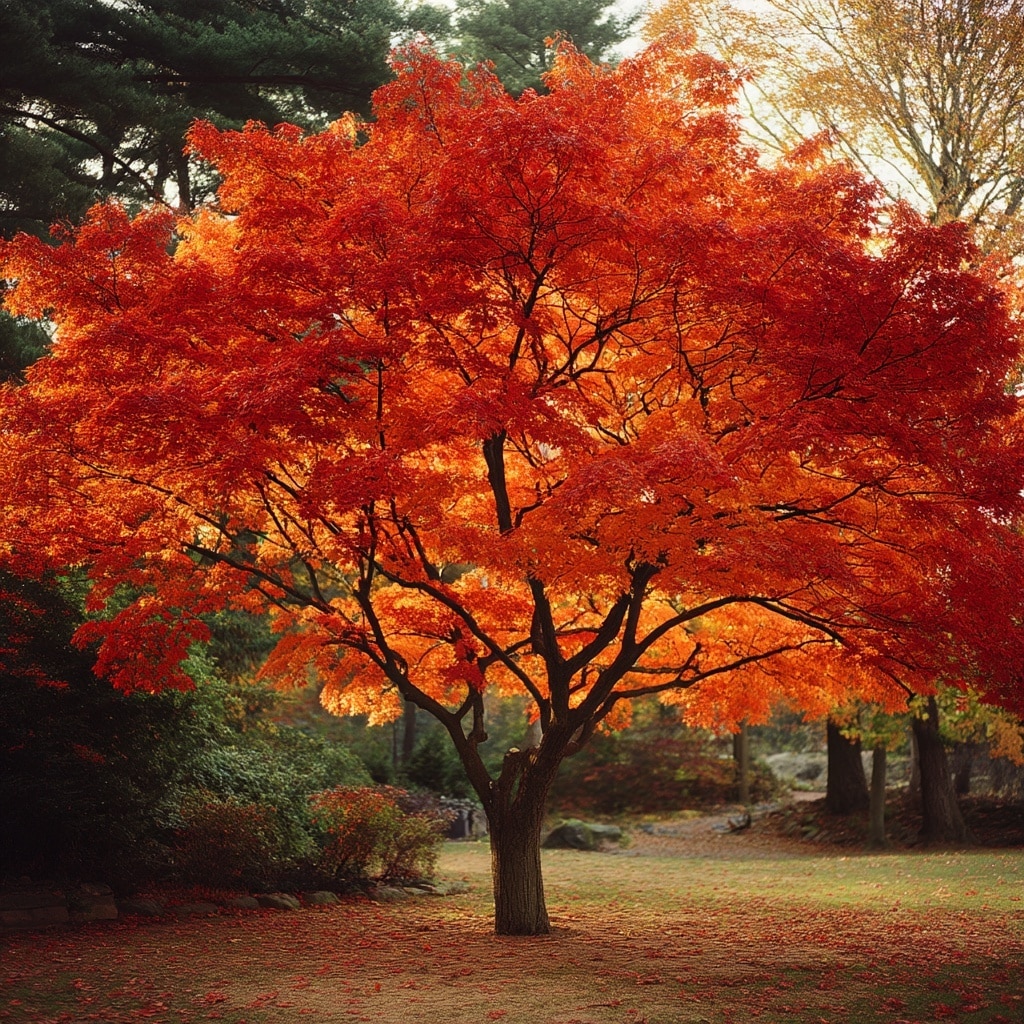
Fast-growing and full of energy, Red Maple lives up to its name each fall with bold red and orange hues. It’s one of the most reliable choices for consistent autumn color, making it a favorite among homeowners looking for a dramatic fall tree that matures quickly.
- USDA Zones: 3–9
- Mature Size: 40–50 ft tall, 25–40 ft wide
- Best For: Fast growth, striking fall color
Look for cultivars like ‘October Glory’ or ‘Red Sunset’ for the most vivid fall tones and improved shape.
4. Ginkgo (Ginkgo biloba)

Few trees turn heads in autumn quite like the Ginkgo. Its fan-shaped leaves change to a luminous golden yellow before falling all at once, leaving a golden carpet beneath. As a bonus, this ancient fall tree species is exceptionally hardy and pollution-tolerant, ideal for urban settings.
- USDA Zones: 4–9
- Mature Size: 14–40 ft tall, 6–30 ft wide
- Best For: Urban gardens, golden fall color
Pro Tip: Choose a male cultivar such as ‘Autumn Gold’ or ‘Goldspire’ to avoid the unpleasant odor of the female tree’s fruit.
5. Eastern Redbud (Cercis canadensis)

While most people admire Redbuds for their early spring blooms, they’re equally deserving of attention as a fall tree. Once the heart-shaped leaves turn from deep green to warm shades of bronze, red, or even burgundy, these small trees add unexpected richness to the autumn garden.
- USDA Zones: 5–9
- Mature Size: 15–30 ft tall, 20–35 ft wide
- Best For: Multi-season color, smaller yards
Varieties like ‘Forest Pansy’, ‘Merlot’, and ‘Flame Thrower’ are standout choices, offering both spring and fall interest with unique leaf coloration.
6. Japanese Maple (Acer palmatum)

Elegant and compact, the Japanese Maple is a go-to fall tree for adding texture and artistic flair. Its finely cut foliage turns vibrant shades of red, orange, or purple depending on the cultivar. Plus, its manageable size makes it ideal for patios, entryways, or small gardens.
- USDA Zones: 5–8
- Mature Size: 6–20 ft tall, 8–15 ft wide
- Best For: Containers, accent planting, small spaces
For season-long red foliage, consider the cultivar ‘Tamukeyama’, which maintains rich color from spring through fall.
7. Crape Myrtle (Lagerstroemia indica)
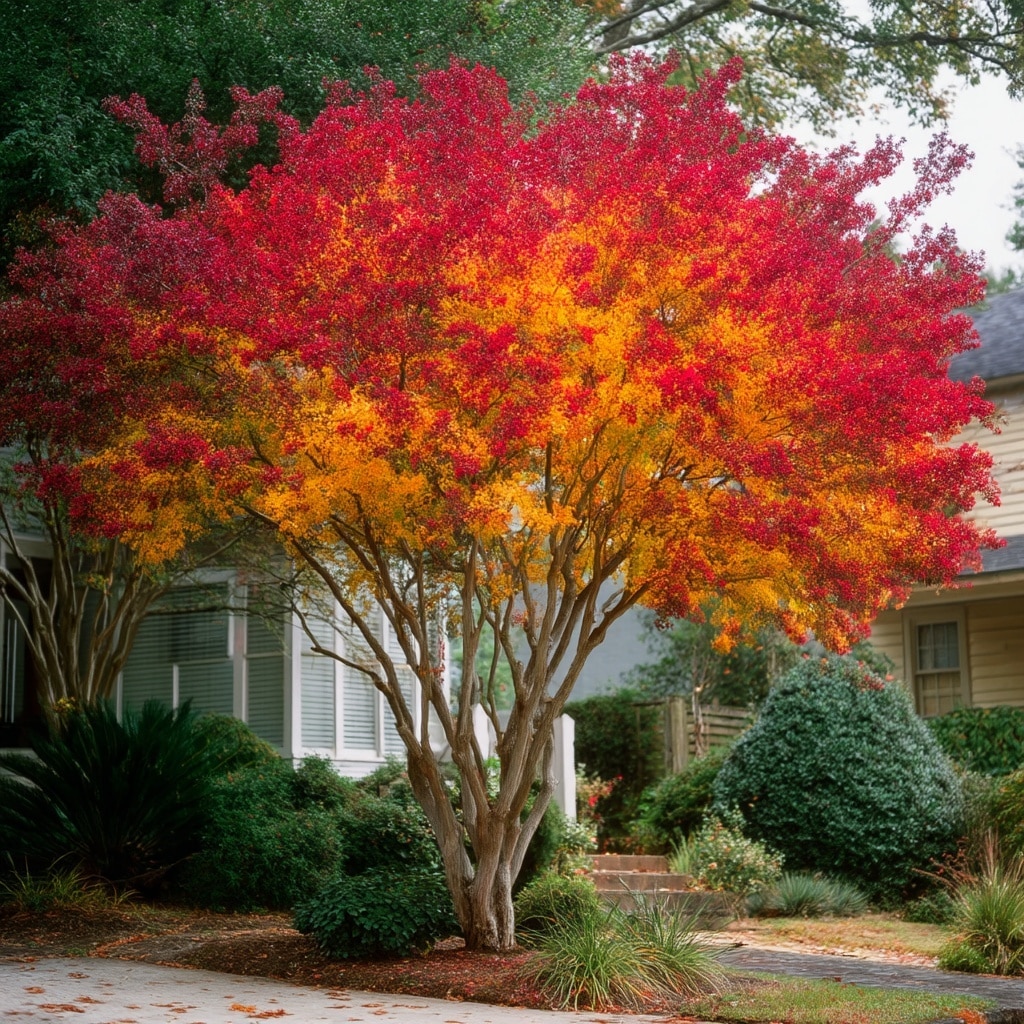
Known primarily for its stunning summer blooms, Crape Myrtle surprises many gardeners by doubling as a showy fall tree. As the flowers fade, its foliage shifts to warm shades of red, orange, or yellow, depending on the variety. Even its bark provides winter interest after the leaves drop.
- USDA Zones: 7–10
- Mature Size: 10–25 ft tall, 10–20 ft wide
- Best For: Southern climates, year-round beauty
Let your Crape Myrtle grow naturally rather than topping it, and choose cultivars like ‘Acoma’, ‘Biloxi’, or ‘Natchez’ for strong fall color and disease resistance.
8. Paperbark Maple (Acer griseum)
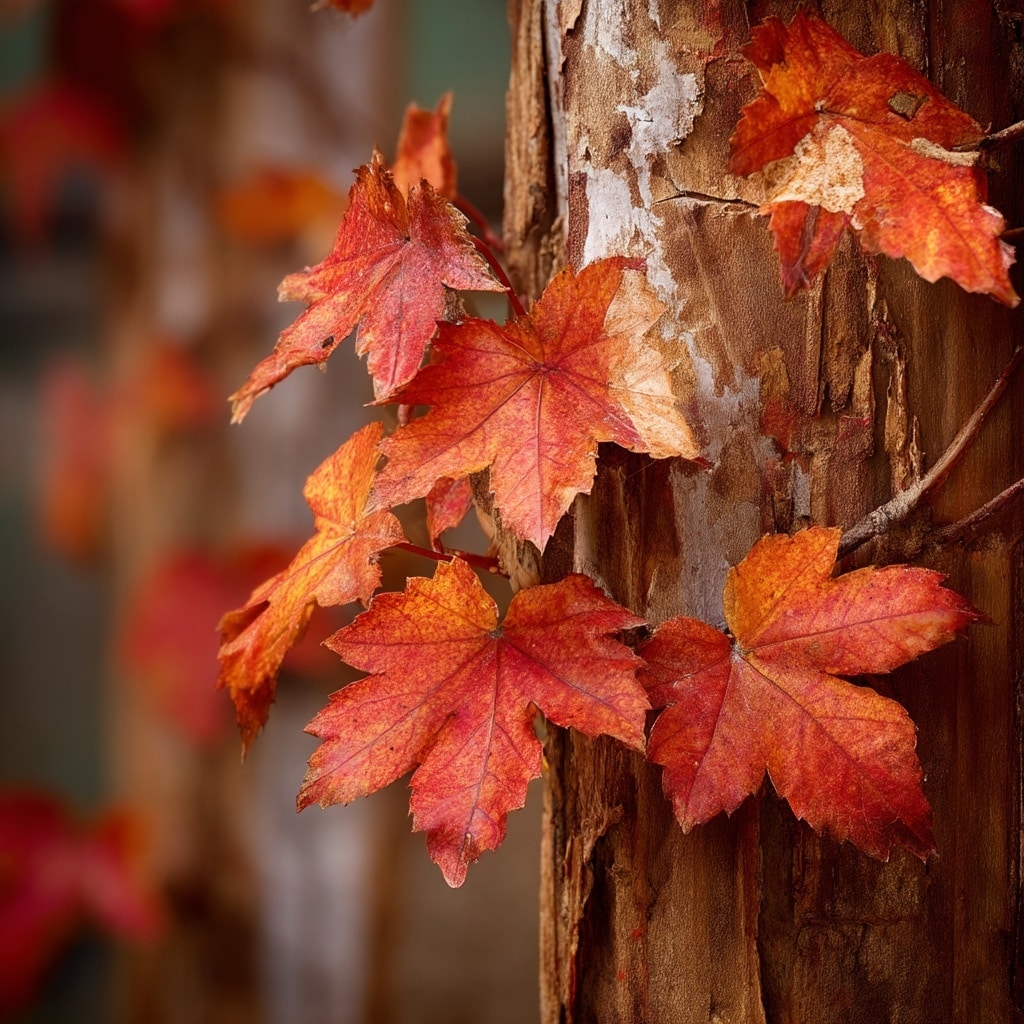
For gardeners seeking a fall tree that also shines in winter, the Paperbark Maple is an exceptional pick. Its red-orange foliage is gorgeous in autumn, but it’s the cinnamon-colored, peeling bark that offers standout beauty long after the leaves have fallen.
- USDA Zones: 4–8
- Mature Size: 20–30 ft tall, 15–25 ft wide
- Best For: Four-season appeal, specimen planting
This tree is a slow grower, but its graceful structure and year-round interest make it well worth the wait.
9. Kousa Dogwood (Cornus kousa)

If you’re looking for a fall tree that offers beauty across all seasons, the Kousa Dogwood is a solid contender. In spring, it blooms with elegant white bracts. By fall, its leaves turn deep red to purple, and small, berry-like fruits add even more color and texture.
- USDA Zones: 5–8
- Mature Size: 15–25 ft tall, 15 ft wide
- Best For: Ornamental value, wildlife gardens
Unlike the more disease-prone flowering dogwood, Kousa Dogwood is highly resistant and well-suited to home landscapes.
10. River Birch (Betula nigra)

Though its fall foliage tends toward soft golden tones, River Birch earns its place on any fall tree list thanks to its striking, exfoliating bark. As leaves drop, the unique texture and color of the bark take center stage, especially in winter landscapes.
- USDA Zones: 4–9
- Mature Size: 40–50 ft tall, 25–40 ft wide
- Best For: Moist soil, bark texture, seasonal interest
‘DuraHeat’ is a great cultivar that offers improved heat tolerance, making it suitable for a wide range of climates.
11. Black Gum (Nyssa sylvatica)
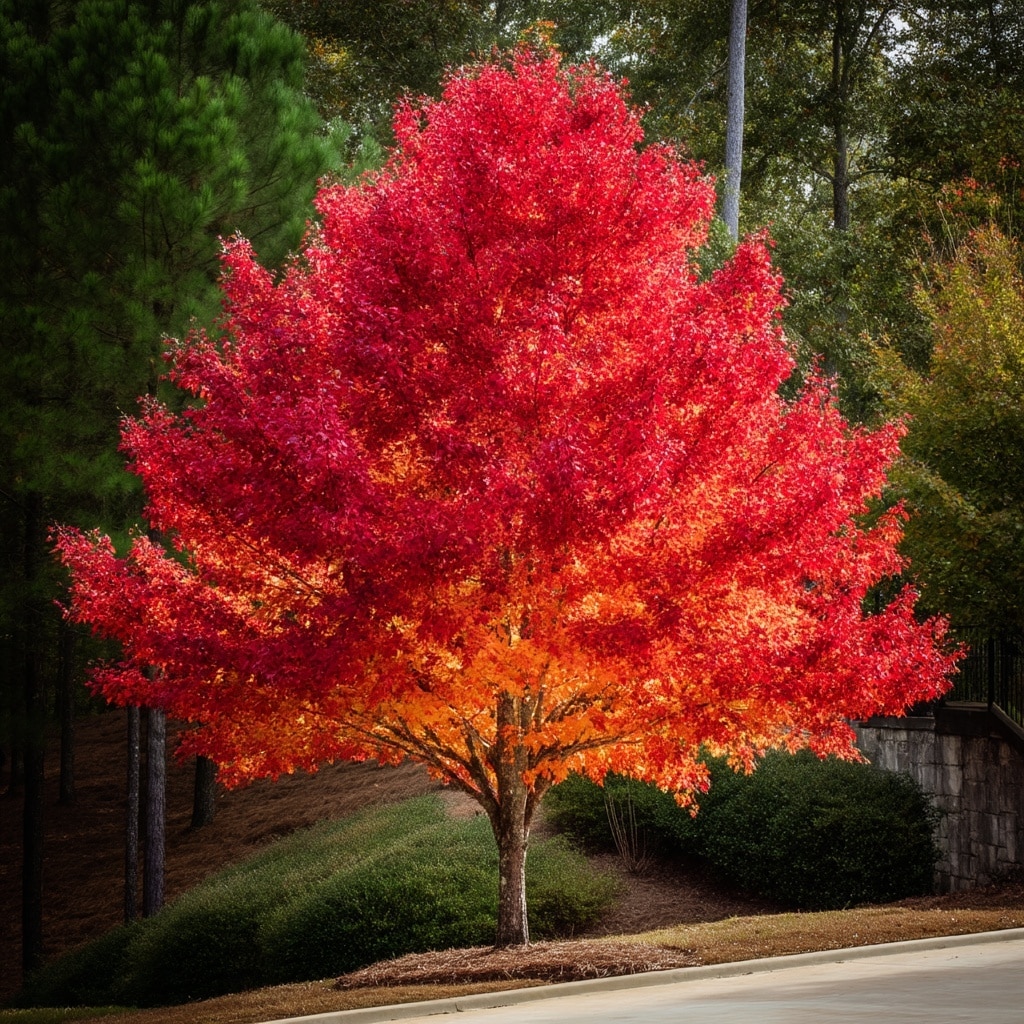
Also known as Tupelo, the Black Gum is one of the most underrated stars of autumn. This native fall tree starts with glossy green foliage that turns to brilliant shades of orange, scarlet, and burgundy. Its upright, pyramidal form adds structure to the landscape year-round.
- USDA Zones: 3–9
- Mature Size: 30–60 ft tall, 20–40 ft wide
- Best For: Native plantings, strong fall color
For enhanced leaf spot resistance and vibrant color, consider the cultivar ‘Green Gables’.
12. Oakleaf Hydrangea (Hydrangea quercifolia)
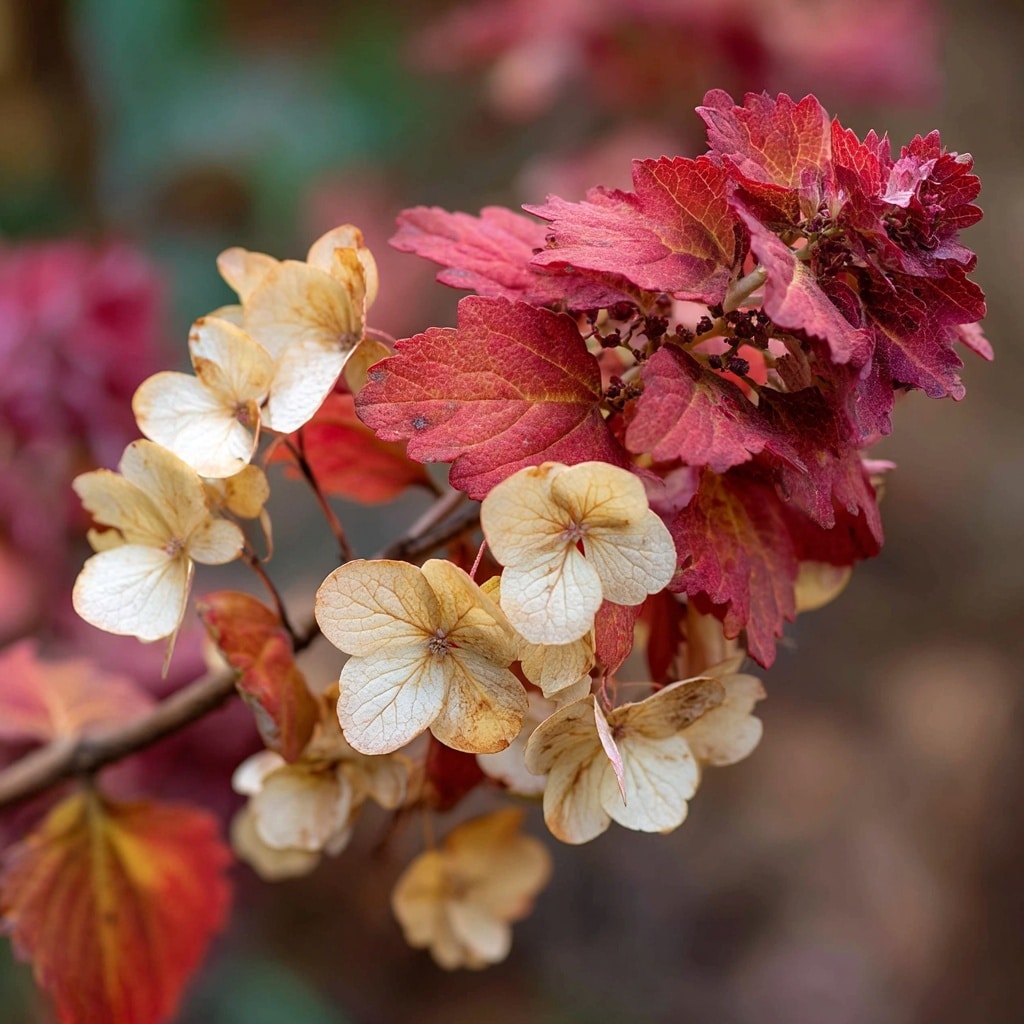
Although technically a large shrub, the Oakleaf Hydrangea behaves much like a small fall tree, especially when trained upright. Its foliage shifts from deep green to warm, rusty reds in autumn, while its creamy flower clusters dry in place for extended interest.
- USDA Zones: 4–9
- Mature Size: 5–10 ft tall and wide
- Best For: Small gardens, shrub borders, fall foliage
This is the only hydrangea species with truly showstopping fall color—perfect for gardens tight on space.
Final Thoughts on Choosing the Best Fall Tree
Adding a fall tree to your landscape is one of the most rewarding ways to celebrate the season and enhance your outdoor space. Whether you’re drawn to the fiery leaves of a Sugar Maple, the textured bark of a River Birch, or the compact charm of a Japanese Maple, there’s a perfect match for every yard size and climate.
By choosing trees with standout fall color, unique structure, or multi-season appeal, you’re not only increasing your garden’s beauty but also its biodiversity and long-term value. Plant one—or a few—and watch your autumn landscape come alive year after year.


